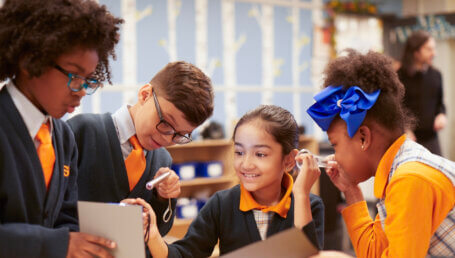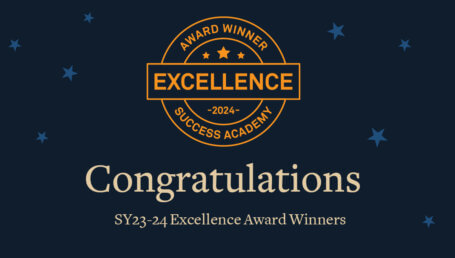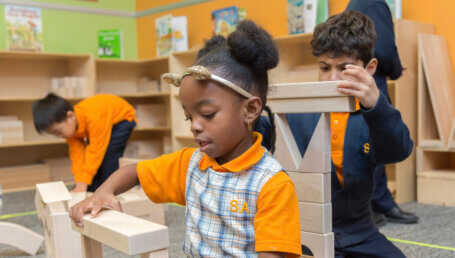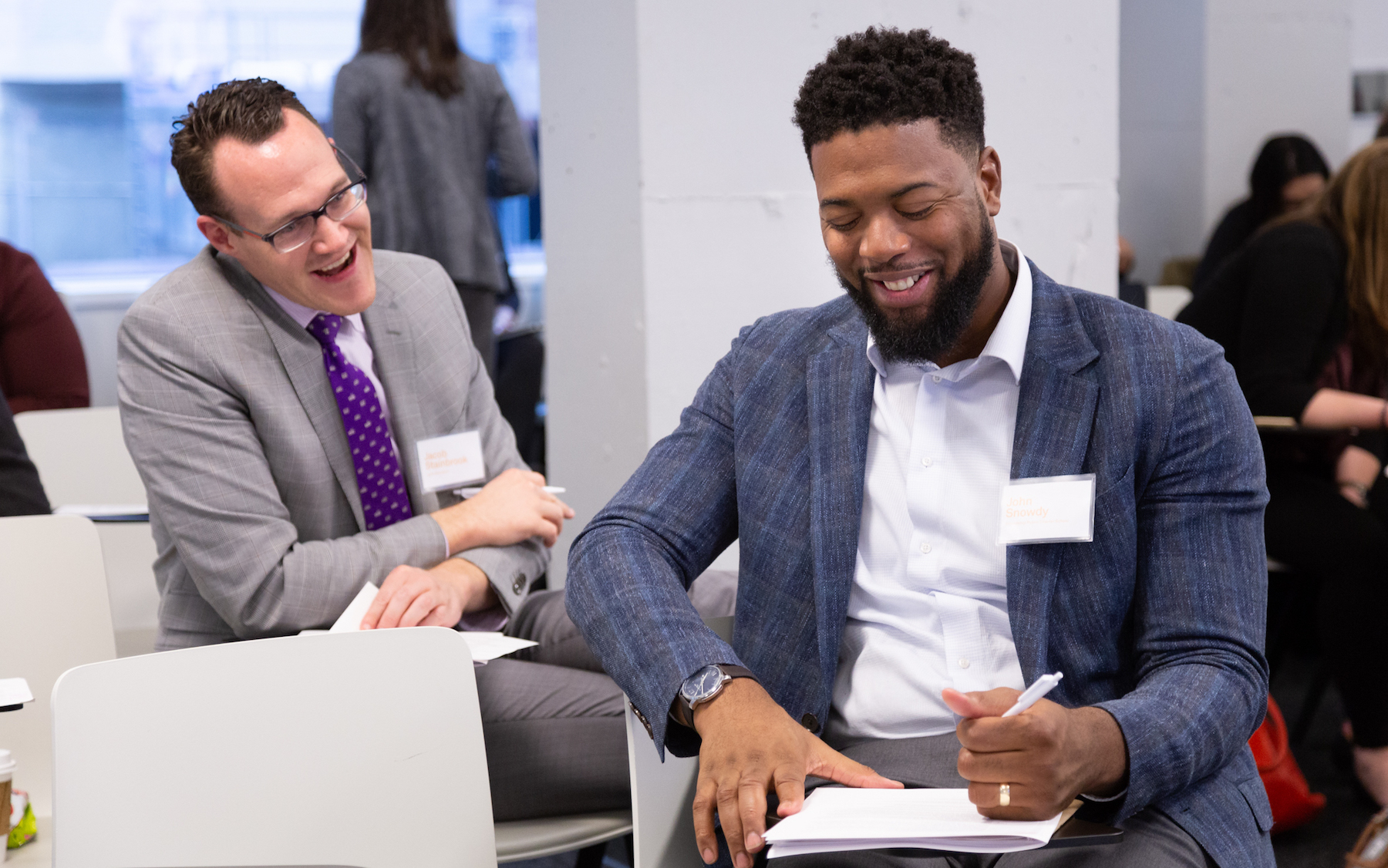
Last week, I found myself back in the student’s desk alongside fellow educators from across the country. We were at Success Academy’s Robertson Center, a new center for educator training, to learn more about the network’s approach to teaching middle school reading.
My expectations were mixed: Professional development for educators often feels disconnected from the work we actually do in schools and leaves me uninspired. But this experience was different. After members of the SA literacy team spoke about their philosophy of “instructional management” — which is all the work they do to ensure that strong instruction takes place in every one of their classrooms — we observed an actual planning meeting led by the principal of SA Hudson Yards Middle School.
Most schools have planning meetings — the daily period when teachers meet with each other or their principal about upcoming lessons. At my school, my teachers and I use this time to review their lesson plans and go over what they will teach. The planning meeting I observed at the Robertson Center workshop was intensively focused on how the teachers would teach — a focus I usually reserve for classroom observations and real-time coaching.
The principal led her teachers through an analysis of the text they would be teaching in their next lesson, a New York Times article, “Don’t Blame Columbus for All the Indians’ Ills.” First, by examining work from the last lesson, they identified that students were struggling to understand crucial ideas and express them precisely. Based on that, the teachers predicted that some might miss the nuance of the author’s argument and conclude that Columbus should be held blameless for tragic declines in indigenous populations, because their health was already deteriorating before he arrived. They considered where to pause and focus in the text, what questions to ask, and what evidence to point to, to ensure that the scholars grasped the complexity of the argument: while Columbus’ arrival did cause catastrophic epidemics among Native Americans, the new world had not been a utopia of well-being before he made contact.
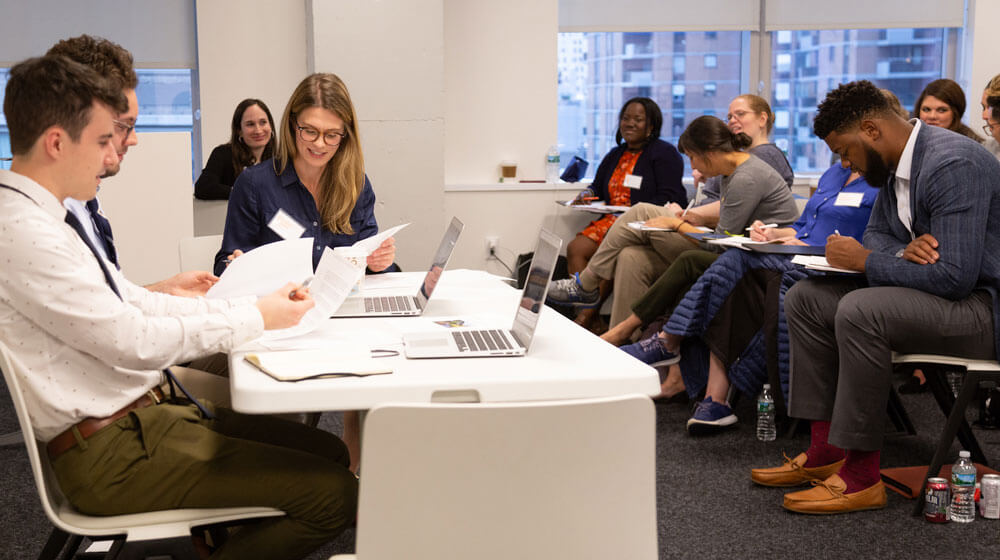
The next day was a planning meeting practicum — all of the workshop participants were put in the role of SA teachers; our facilitator was the principal. Suddenly, we were immersed in what seemed like a college literature seminar. We debated the meaning of Pablo Neruda’s luminous poem “Poetry,” about how poetry entered and changed his life. How did his relationship with poetry change over time? Just as students would, some of us struggled to specify the answer. One participant pointed to the phrase “among violent fires” in the first stanza and “deciphering that fire” in the second. Light bulbs went off — Neruda was learning to harness the artistic force that had once overwhelmed him. I was on the edge of my seat, fully intellectually engaged; this was how we could elevate planning for middle school reading.
I walked away from the event filled with ideas for changes I could make at my school. Friendship Southeast Middle, where I am principal, serves a student body that is 75% at risk; many students enter below grade level in reading. While the school is strong — we have an auspicious, standards-aligned reading curriculum in place and a talented leadership team — good is not good enough to get my kids where they need to go. We must deliver consistently excellent instruction.
I walked away from the event filled with ideas for changes I could make at my school.
The workshop brought home to me the importance of finding a powerful curriculum, committing to it, and holding everyone accountable for using it. The session also underscored my organization’s priority on ensuring administrative teams have a deep and comprehensive knowledge of every aspect of the curriculum. Like the workshop facilitators did with the Neruda poem, we can use this knowledge to guide our teachers to that same level of understanding and help them transfer it to students. Finally, we will push the practice of bringing student work to all our planning meetings, so we can figure out where we as adults fell short and make changes that will help our students’ comprehension and critical thinking.
The ideas I am bringing back to my school are simple, specific, and strategic — and that’s why I think they’ll make a difference. I am walking away from this workshop with some clear, focused changes I can make to use the strengths of my school community more effectively and get better outcomes for my students. I wasn’t sure about going back to class, but sometimes becoming a student again is the best thing you can do as an educator.





